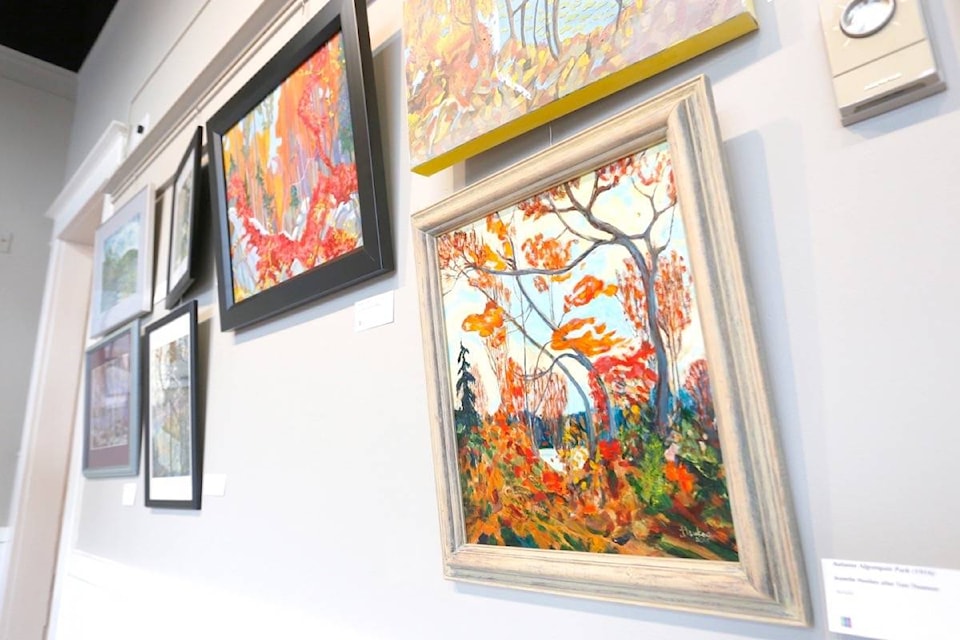Many Canadians will recognize at least one of the iconic pieces of the Group of Seven artists who helped shape the Canadian identity.
But few will have taken as close a look as Norma Emerson’s Group of Seven painting class, which had participants recreate some of the famous works.
Reproducing a piece is a much fuller way to see the artists work, she said — a way to not only see what techniques were used, but understand why.
Forty-five pieces, representing the work of 12 of Emerson’s students, along with her own, are now on exhibition at the McMillan Arts Centre for the first time, following an opening reception held on April 8.
“I am so proud of my students,” she said, taking a look about the gallery.
Each student chose the artist and the piece that they wanted to recreate, she said. “(And) quite often I was stunned at the level of difficulty they would choose. But they taught me to have faith in them, because they always rose to the challenge.”
Part of that, she said, is likely due to the importance of the works they were recreating. Some of her students had never managed to finish a painting before, but with these reproductions, it was different, she said, perhaps because these works are so central to so many people’s sense of what Canada is.
But Canada was not always so interested in its own artists.
Back in 1880, when Canada’s National Gallery was formed, the gallery didn’t purchase Canadian works. Rather, it bought mostly pastoral landscapes from Europe, Emerson said in her speech at the exhibition reception.
“Lawren Harris (a Group of Seven member) returned from studying in Antwerp, Belgium, with a burning desire to create a cultural identity for Canadians through art,” said Emerson.
A.Y. Jackson, Harris and others would later come together to form the Group of Seven, and their paintings of Canadian landscapes succeeded in becoming a strong part of Canada’s cultural identity, said Emerson.
Now, the famous paintings can trigger memories for Canadians, or give a sense of strength or comfort, and the same is true for her students, she said.
The exhibit is also a way to celebrate Canada’s 150th birthday.
Blue dots below about half the paintings at the MAC exhibition show just how recent all of this artistic identity is. The dots show which of the pieces cannot be sold, as the original author of the work must be dead for more than 50 years for their work to enter the public domain.
The Celebrating the Group of Seven exhibition will run at the MAC until the end of the month of April.
